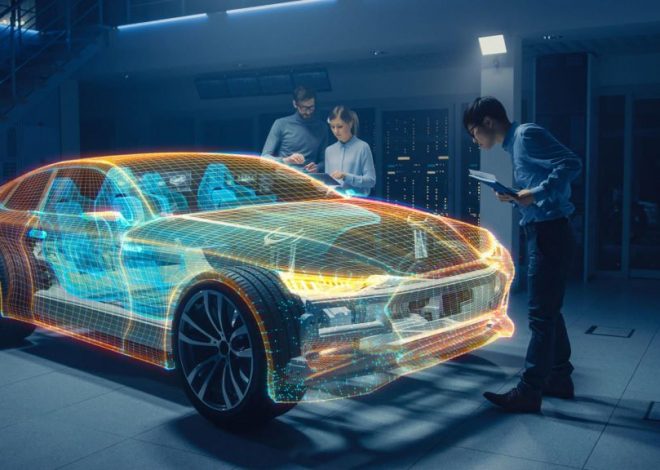
The Future of Mobility: Tech Trends in EV Charging Station Development
The landscape of transportation is undergoing a profound transformation, with electric vehicles (EVs) emerging as a pivotal force in shaping the future of mobility. Central to this transition is the development of EV charging infrastructure, which serves as the backbone of the electrified transportation ecosystem.
In this exploration, we delve into the technological trends driving the evolution of EV charging stations, envisioning a future where charging is seamless, efficient, and ubiquitous. If you are looking for a mobile EV charger then, you may check Zencar.
The Rise of Electric Vehicles
The rise of electric vehicles (EVs) marks a transformative shift in transportation, driven by environmental concerns and technological advancements. With increased range, improved charging infrastructure, and growing consumer demand, EVs are poised to revolutionize the automotive industry, paving the way for a cleaner and more sustainable future.
With major automakers committing to electrification and governments setting ambitious targets for carbon emissions reduction, EVs are poised to become mainstream in the coming years. As EV ownership grows, so does the demand for reliable and convenient charging infrastructure.
Evolution of EV Charging Stations

The evolution of EV charging stations reflects a dynamic journey towards sustainability and convenience. From basic AC charging points to sophisticated DC fast chargers, the landscape has transformed to accommodate diverse needs.
Innovations like wireless charging, smart grid integration, and renewable energy adoption mark the latest chapter, promising faster, cleaner, and more accessible charging experiences.
The development of charging infrastructure has been spurred by innovations in hardware, software, and network connectivity issues, aimed at enhancing charging speed, efficiency, and user experience.
- EV charging stations have undergone a remarkable evolution, transitioning from basic Level 1 chargers to sophisticated hubs of energy management and connectivity.
- Initially, early chargers were slow and limited in their capabilities, primarily serving as overnight charging solutions for residential use.
- However, advancements in technology have led to the development of fast-charging DC stations capable of replenishing an EV’s battery in a fraction of the time.
- Moreover, the integration of smart features, renewable energy sources, and modular designs has transformed charging stations into dynamic assets within the electrified transportation ecosystem, facilitating seamless and sustainable mobility experiences.
Tech Trends Driving EV Charging Station Development
Tech trends like ultra-fast charging, bidirectional capabilities, wireless technology, advanced technology, scalable designs, renewable energy integration, and smart solutions are driving the development of EV charging stations.
1. Ultra-Fast Charging
One of the most significant trends in EV charging station development is the pursuit of ultra-fast charging capabilities. Companies like Tesla, Electrify America, and Ionity are investing in high-power charging networks capable of delivering up to 350 kW of power, significantly reducing charging times and enhancing convenience for EV drivers.
2. Bidirectional Charging
Bidirectional charging empowers electric vehicles to not only draw power but also supply it back to the grid or buildings. This dual functionality transforms EVs into mobile energy storage units, enhancing grid stability and enabling energy resilience. It signifies a pivotal step towards a decentralized, dynamic energy ecosystem with vehicles as active contributors.
3. Wireless Charging

Wireless charging technology eliminates the need for physical cables, enabling EVs to charge simply by parking over a charging pad embedded in the ground. While still in its nascent stages, wireless charging holds immense promise for enhancing user convenience and integration with smart city infrastructure.
4. Scalable and Modular Designs
Scalable and modular designs in EV charging stations offer flexible solutions tailored to diverse needs. With the ability to expand capacity and functionalities as demand grows, these designs optimize space and resources while accommodating evolving technological requirements. Such adaptability ensures efficient and cost-effective deployment of charging infrastructure.
5. Integration with Renewable Energy Sources
Integration with renewable energy sources is imperative for sustainable EV charging infrastructure. By harnessing solar, wind, and other renewables, charging stations reduce carbon footprint and promote cleaner transportation.
Challenges and Opportunities
Despite the rapid progress in EV charging station development, several challenges remain on the path to widespread adoption. However, these challenges also present opportunities for tech innovation and collaboration across the public and private sectors.
The Future of Mobility

The future of mobility is poised for remarkable transformation, driven by technological innovation. From autonomous vehicles to electric propulsion, and seamless intermodal connectivity, mobility will become more efficient, sustainable, and accessible.
- The future of mobility heralds a paradigm shift, driven by technological breakthroughs. From electric vehicles to autonomous transportation, connectivity, and sustainability, it promises a landscape of seamless journeys, reduced emissions, and enhanced accessibility.
- The future of mobility is poised for a profound transformation, driven by electrification, connectivity, and autonomy. Electric vehicles (EVs), powered by clean energy sources, will become ubiquitous, supported by advanced charging infrastructure.
- Autonomous vehicles, enabled by artificial intelligence and IoT, will revolutionize transportation, enhancing safety and efficiency. Shared mobility services will proliferate, offering on-demand access to transportation while reducing congestion and emissions.
- Integrated mobility solutions, enabled by data analytics and smart city infrastructure, will optimize travel experiences and promote sustainability. Together, these advancements will shape a future where mobility is seamless, sustainable, and accessible to all.
Conclusion
In conclusion, the trajectory of mobility is set on an electrifying course, propelled by cutting-edge EV charging station innovations. As technology trends like ultra-fast charging, bidirectional capabilities, and renewable energy integration redefine the landscape, the future promises sustainable, efficient, and user-centric.
This evolution underscores a paradigm shift towards cleaner, smarter mobility ecosystems, fostering environmental stewardship and enhancing the overall quality of urban life. With continued advancements, collaborations, and investments.


